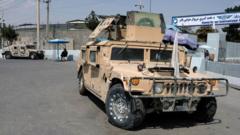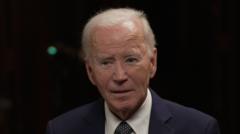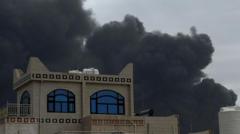Sources reveal that approximately half a million US weapons left in Afghanistan after the Taliban's 2021 takeover are unaccounted for, with reports of smuggling and sale to militant organizations like al-Qaeda. Despite Taliban claims of secure storage, the black market for arms flourishes, exacerbating the risk of these weapons falling into dangerous hands.
Unaccounted US Weapons in Afghanistan: A Growing Threat to Regional Stability

Unaccounted US Weapons in Afghanistan: A Growing Threat to Regional Stability
A significant amount of US weaponry abandoned in Afghanistan has reportedly been sold or smuggled to militant groups, including al-Qaeda affiliates, raising concerns over security in the region.
In a troubling turn of events, around half a million weapons that fell into Taliban hands during their 2021 takeover of Afghanistan have either been lost, sold, or smuggled to various militant groups, according to sources cited by BBC. The Taliban are believed to have gained control over roughly one million pieces of military equipment, much of which was funded by the US. As they advanced through the country, many Afghan soldiers abandoned their arms or fled, leaving the equipment behind, alongside items that were hastily left by withdrawing US forces.
The United Nations has reported that some of these weapons may have ended up with al-Qaeda affiliates, including groups like Tehreek-e-Taliban Pakistan and the Islamic Movement of Uzbekistan. In a closed-door session last year, the Taliban acknowledged that at least half of their equipment is currently "unaccounted" for, raising serious concerns about weapon proliferation in the region.
Hamdullah Fitrat, Taliban’s deputy spokesperson, dismissed claims about smuggling and loss, asserting that they safeguard all military assets. However, a UN report revealed the existence of a thriving black market for US military weapons. Local Taliban commanders have been permitted to retain 20% of the seized arms, and the practice of gifting arms among commanders to consolidate power has become commonplace.
Although the US oversight body for Afghan reconstruction, known as Sigar, recorded fewer weapons than reported by other sources, they acknowledged significant difficulties in tracking the vast amounts of equipment supplied by various US agencies over the years. Political figures, including former President Donald Trump, have voiced concerns over the issue, with Trump calling for the reclamation of abandoned military assets, quoted at an astounding $85 billion.
Zabihullah Mujahid, the Taliban’s chief spokesperson, rebuffed Trump's claims by stating that the arms were seized from the previous government to defend their territory. The Taliban have even showcased US weapons in propaganda output, framing them as trophies of their victory and legitimacy.
Despite the ongoing concerns about weapon accessibility for regional militant groups, some of the more sophisticated equipment remains largely non-operational due to a lack of skilled personnel. Still, the Taliban have effectively utilized helicopters, Humvees, and firearms for military operations, challenging any attempts from the US to recover such assets.
Amid these rising tensions and the potential for a resurgence in militant capabilities, experts assert that any recovery attempt for these weapons would likely incur costs that outweigh their actual value. The focus remains on the escalating risks posed by the available weaponry and its access by hostile factions in the region.






















